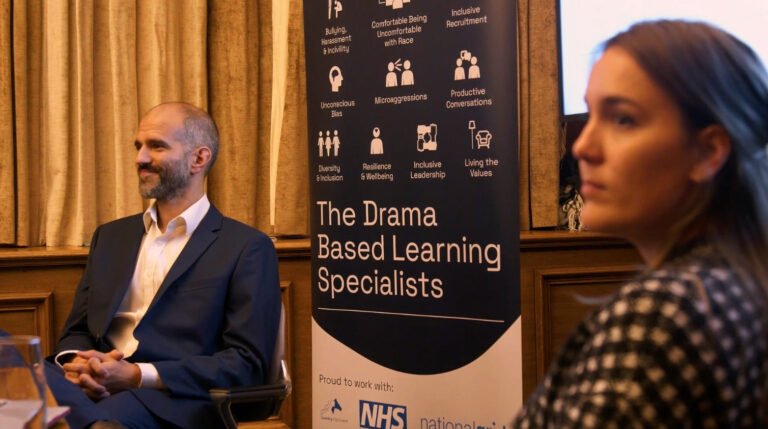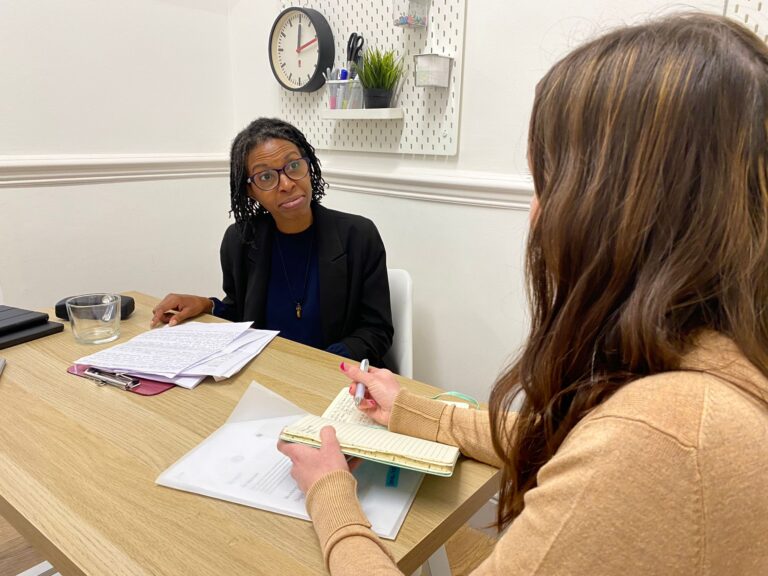Diverse & Inclusive Leadership
We previously blogged about the benefits of diverse and inclusive leadership at board and senior leadership level. This month we’re going to shine a light on and examine how far organisations have come in terms of women holding board positions and what work there’s still to do.
100+ years ago during the war effort, the proportion of women in employment rose from 24% in 1914, to 37% in 1918. ‘Women undertook jobs normally carried out by men and proved they could do the work just as well.’ – UK Parliament
It was a historic time and one would hope that a century later, women would have equal or close to equal representation in work, including at the top level – but this is sadly not the case.
Yes, great strides have been made (especially in the last 20 years), but the number of women in power still isn’t representative. Let’s examine the facts . . .
The Corporate Sector
It wasn’t until 1997 that the FTSE 100 gained its first female Chief Executive in Marjorie Scardino. – Financial Times. In 2010, 152 of the FTSE 350 had all-male boards and women only made up 12.5% of FTSE 100 boards. – Women on Boards Davies Review
2011 heralded the start of the 5 year Davies Review. This was a business-led approach, supported by government to examine & reduce the underrepresentation of women on FTSE 100 boards. Its goal was ambitious – to double women’s representation on FTSE 100 boards from 12.5% to 25%; a figure it exceeded, with women making up 26.1% of FTSE 100 boards by October 2015. The FTSE 100 also achieved zero all-male boards by the end of the review.
During the same time-frame, women on FTSE 250 boards increased to 19.6% and by the end of the review in 2015, FTSE 350 boards were made up of 682 women, compared to just 289 women, five years prior.
Such was the success of the Davies Review that the Hampton-Alexander Review (2016-2020) continued its work and again made great gains for female representation at board level:
By 2021 women made up 36.2% of FTSE 100 boards, 33.2% of FTSE 250 boards and 34.3% of FTSE 350 boards, with zero all-male boards in the FTSE 350. – Hampton-Alexander Review
These gains are great achievements, but it’s not gender parity & there are limitations. For example, whilst the number of women on boards has increased, women still only hold ‘14% of executive directorships in the FTSE 100’. This contributes to the gender pay gap because as the Hampton-Alexander Review explains, ‘executive positions carry far higher pay than non-executive directors.’
The Pipeline, Women Count 2020 report found that, ‘women enter finance in large numbers, but few make it to CFO. This year just 16% of CFOs are women, with men taking 84% of these roles.’
With regards to CEOS, in 2020, there were ‘just 13 women CEOs of FTSE 350 companies. That’s a mere 5% of company leaders.’
What we need is not just more women on boards, but more women occupying the executive positions of Chief Executive Officers, Chief Operating Officers, and Chief Financial Officers.
In 2020 The Pipeline found that, ‘the financial year closed with more FTSE 100 CEOs named ‘Peter’ than women in these roles’. As Margaret McDonagh and Lorna Fitzsimons, Co-founders of Pipeline state: “In any age, let alone in the third decade of the 21st century, and during a Covid-19 economic crisis, this position is scandalous.”
With the pandemic disproportionately affecting women’s careers, we also run the risk of not just losing the momentum we have gained in the last decade, but losing some of the gender gains we have achieved, both in the general workforce and at board level.
The pandemic has been devastating for the economy and having diverse boards, with women on boards helps companies financially. The Pipeline report found that, ‘FTSE 350 companies with no women on their executive committees have a net profit margin of 1.5%, whereas those with more than 33% women at this level reached an impressive 15.2% net profit margin . . . The UK economy and shareholders have missed out on an additional £47 billion in pre-tax profit, enough money to keep the NHS running for a full 5 months.’ Or as HR Magazine explains, ‘It pays to have more women on the board.’
The Charitable Sector
What of charities? How do their trustee boards look in terms of female representation?
A report commissioned by The Charity Commission, GOV.UK in 2017 found:
- ‘Boards are not reflective of the communities charities serve.’
- ‘92% of trustees are white, older, and above average income and education.’
- ‘71% of charity chairs are men and 68% of charity treasurers are men.’
Inclusive Boards’ 2018 report which examined the diversity of boards and senior leadership teams in the sector found that charities are ‘lagging behind the private sector in relation to leadership at board level,’ and that ‘only 2.9% of trustees and 2.5% of senior leaders within the sector were women of colour’.
Why might this be? NCVO discusses how, ‘the problem, of board diversity, is exacerbated by the fact that 81% of charities recruit for trustees by word of mouth or personal recommendation.’
“There is no room for complacency about the state of trusteeship. Trustees do not reflect the communities charities serve. Charities are therefore at risk of missing out on the widest range of skills, experience and perspective at board level – indeed trustees themselves report lacking key skill areas, including digital.” – Helen Stephenson, Chief Executive, The Charity Commission.
If you work in the charity sector, what’s the diversity of your board like? With the added financial pressures the pandemic has brought, the squeezing of funding from government, councils, donations drying up etc, can you afford not to diversify your board?
Politics
The job of an MP is to represent the interests of their constituents. In order to have fair policies, it’s vital we have a diverse parliament and government, where our leaders and representatives mirror that of society.
In 2021 a research briefing was posted by the UK Parliament, House of Commons Library, entitled ‘Women in Politics and and Public Life’. It found the representation of women to be similar to that of the corporate and charitable sectors:
‘In both politics and public life in the UK, women have historically been underrepresented. In recent years, their proportion has increased, although in most cases men remain overrepresented, especially in more senior positions.’
The research briefing states, ‘There are 220 women MPs in the House of Commons’ and ‘at 34%, this is an all-time high.’
However as 50:50 Parliament (an organisation working towards an inclusive gender-balanced parliament) documents: ‘In the 100 or so years since women could first stand for Parliament over 5000 MPs have been elected but only 552 have been women.’
When we look at the top level of government – the cabinet, we can see that, ‘of the 23 members of the cabinet, six are women.’ – Institute for Government.
How can our government lead and solve the problems our country faces; when we are not fully utilising the diverse talents that are available? Unfortunately this situation is not unique to UK politics. Much the same can be said for women in power globally. UN Women (2021) summarises:
- ‘Women are underrepresented at all levels of decision-making worldwide, and achieving gender parity in political life is far off.’
- ‘Women serve as Heads of State or Government in only 22 countries, and 119 countries have never had a woman leader. At the current rate, gender equality in the highest positions of power will not be reached for another 130 years.’
Different countries have different approaches to the problem of female representation. In 2015, Canada’s Prime Minister, Justin Trudeau made world news when he appointed 15 women and 15 men to his cabinet, stating, “It’s important to be here before you today to present to Canada a cabinet that looks like Canada.” – The Guardian.
Conclusion
The battle for gender parity in the workforce and for women to be represented at board and SLT level continues. Below are some comments and recommendations from the reviews and reports detailed in this blog, as to how companies can achieve this:
“We must continue our focus on gender and look at the true diversity of those leading our business. In order to remain relevant to our clients and communities we need leaders who come from a wide range of backgrounds, each bringing different skills and views to the table, creating boardrooms that truly mirror our society. Without these different outlooks and diversity of skills and experiences, our businesses will simply not thrive in this fast paced changing competitive world.” – Melanie Richards, Vice Chairman, KPMG in the UK, Davies Review.
‘Businesses need to continue efforts to increase women’s representation further and more women should now be progressing to Chair and Senior Independent Director appointments, with increasing numbers of women appointed to Executor Director positions.’ – Davies Review.
“To succeed in getting more women into senior leadership roles, you need to have a healthy pipeline of female talent running right through an organisation. That means identifying and removing barriers at every stage which prevent women from making progress in their careers.” – Rt Hon Theresa May MP, Former Prime Minister of the UK, Pipeline, Women Count 2020
‘How can you increase diversity? Set limits for trustee teams. Use alternative methods of recruitment. Enlist people with life experience related to your charitable cause. Advertise trustee vacancies using specialist job boards. Recruit people with a range of skills. Organise board meetings that are accessible and convenient for all. Establish positive working relationships. Encourage inclusive and accessible decision making. Inclusive chairing.’ – NCVO
“There are many businesses making huge strides with their female leadership but too few women hold senior leadership positions and executive roles on Boards. We must focus on creating a stronger pipeline to these positions and getting more women onto these pathways… we have to go beyond the numbers and remove the barriers that under-represented groups face throughout their careers.” – Mary O’Connor, Acting Senior Partner, KPMG, Hampton-Alexander Review
“Companies should as a matter of best practice have a woman in at least one of the 4 roles of Chair, CEO, SID and CFO, and investors should support such best practice.” – Sir Philip Hampton, Hampton-Alexander Review
“We have fallen short on representation in Executive Committees . . . As we reflect on progress, we know that we cannot be satisfied until we can say that unconscious bias is no longer an impediment to the development of women leaders and that all leadership teams reflect and utilise all of the talent available.” Andy Duff, on behalf of the Steering Group, Hampton-Alexander Review
If your organisation would like support in reducing Unconscious Bias in the workplace, to benefit from Diverse and Inclusive workforces and Inclusive Leadership, check out our training packages for more information.
Jemma Houghton
Jemma is one of our associates at Enact Solutions.



